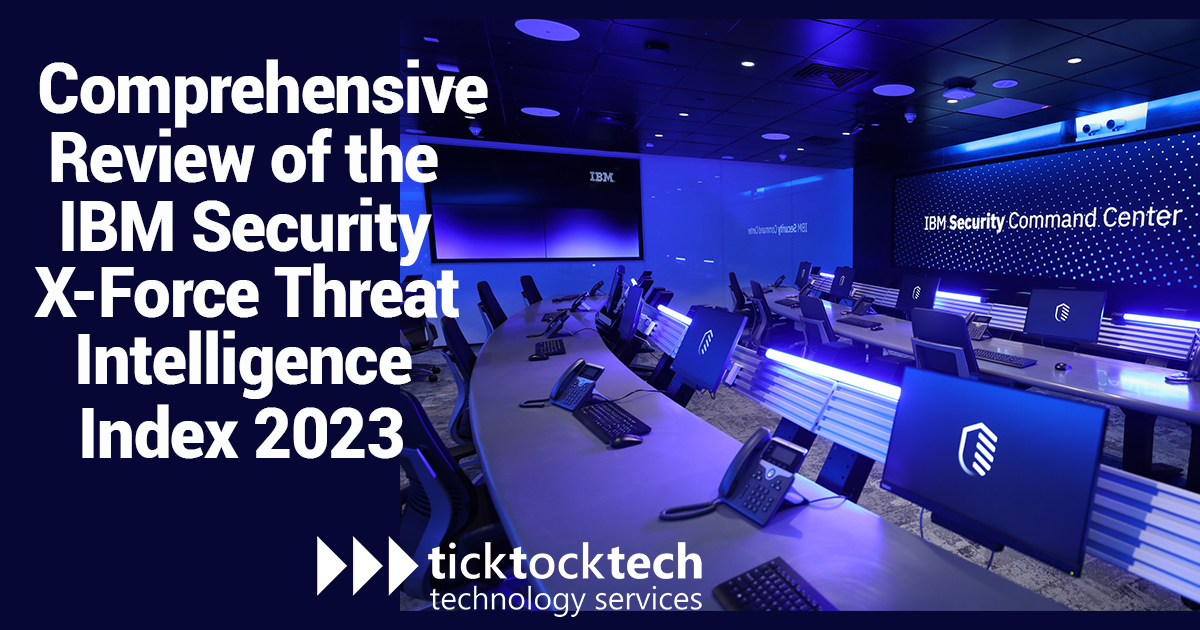In today’s digital age, cybersecurity threats are becoming increasingly sophisticated and prevalent, posing significant risks to individuals and organizations worldwide. As cybercrime continues to evolve, organizations must stay abreast of the latest cybersecurity trends and best practices to protect their sensitive data and assets. To help people stay informed and protected, IBM Security has released an annual Threat Intelligence report. In this post, we will explore the key highlights of the IBM Threat Intelligence Report and the actionable recommendations you can take to enhance your cybersecurity posture.
Overview of the IBM Threat Intelligence Report
The IBM Threat Intelligence Report is an annual report published by IBM Security that provides insights into the latest cybersecurity threats and trends. The report is compiled by the IBM Security X-Force team, which is made up of security experts. These experts monitor global threat landscapes and analyze data from millions of monitored devices and endpoints.
The report covers different attack techniques, including ransomware, phishing, supply chain attacks, and more. It provides an in-depth analysis of the latest tactics, techniques, and procedures used by cybercriminals, as well as recommendations for enhancing cybersecurity posture. This will help businesses and organizations stay up-to-date on cybersecurity threats and trends. By adopting the recommendations outlined in the report, people can better protect their sensitive data and assets from cyber-attacks.
Insights from the IBM Threat Intelligence Report
The IBM Threat Intelligence Report analyzes current cybersecurity threats and trends. Some of the key insights from the report include:
- Ransomware remains a major threat: Ransomware attacks remain a significant threat worldwide. The report reveals that the average ransom demand increased by 43% in 2021, and the frequency of attacks has also increased by 7% compared to the previous year.
- Phishing attacks are more sophisticated: Phishing attacks remain a popular attack vector for threat actors. The report points out that phishing campaigns are becoming more sophisticated. They now use advanced social engineering techniques to deceive users into sharing sensitive information.
- Supply chain attacks are increasing: Supply chain attacks are becoming more prevalent, with threat actors targeting third-party vendors to gain access to their customers’ networks.
- Remote work continues to pose cybersecurity challenges: The COVID-19 pandemic has accelerated the shift towards remote work, creating new cybersecurity challenges for organizations. The report emphasizes the importance of strong security measures to safeguard remote networks.
Actionable Recommendations for Enhancing Cybersecurity
To address cybersecurity threats, organizations need a proactive approach. Here are some of the actionable recommendations from the IBM Threat Intelligence Report that can help organizations enhance their cybersecurity posture:
- Regular Assessments: Regular cybersecurity assessments will help organizations detect vulnerabilities before getting exploited by attackers. It’s important to identify these weaknesses and address them promptly. By doing so, organizations can better protect themselves from potential cyber threats. Regular assessments can also help organizations stay compliant with industry regulations and best practices.
- Implement multi-factor authentication (MFA): MFA is an effective security measure that can prevent unauthorized access to sensitive data and assets. Organizations should implement MFA for all remote access and critical systems to enhance their security posture.
- Stay vigilant against phishing attacks: Organizations should educate their employees on the latest phishing tactics and how to spot and report suspicious emails. Regular phishing simulations can also help organizations test and strengthen their employees’ awareness and response to phishing attacks.
- Monitor the supply chain: Organizations should implement robust supply chain security measures to detect and prevent supply chain attacks. This includes conducting due diligence on third-party vendors, implementing secure software development practices, and monitoring the supply chain for potential threats.
Conclusion
The IBM Threat Intelligence Report offers valuable insights into current cybersecurity threats and trends. This will help organizations stay informed and better protected against cyber attacks. Organizations must take a proactive and comprehensive approach to enhance their cybersecurity posture. This includes implementing the actionable recommendations from the report. By doing so, organizations can mitigate the risks of cyber threats.

